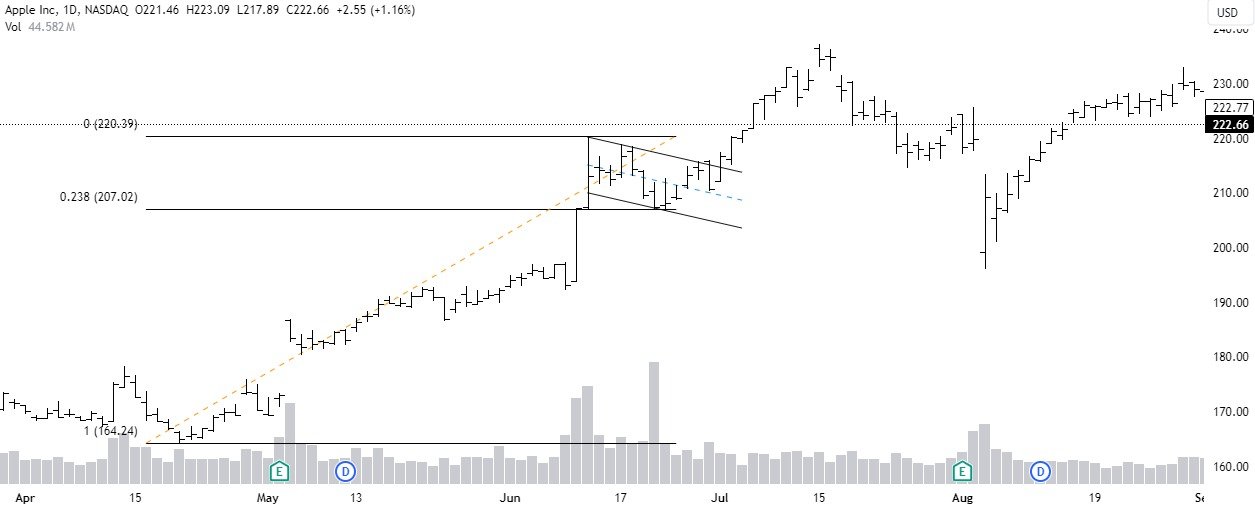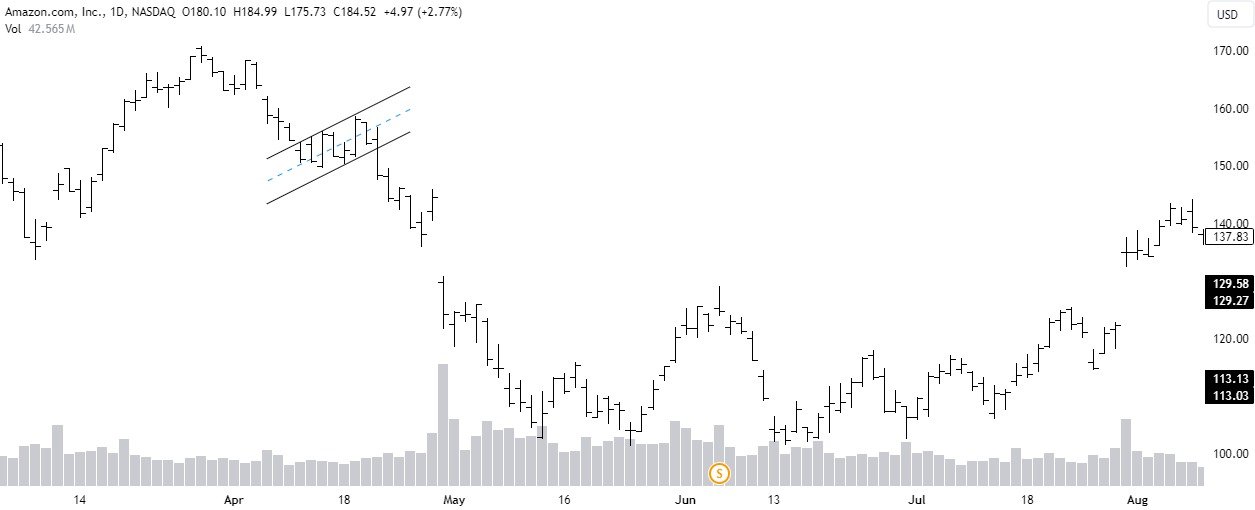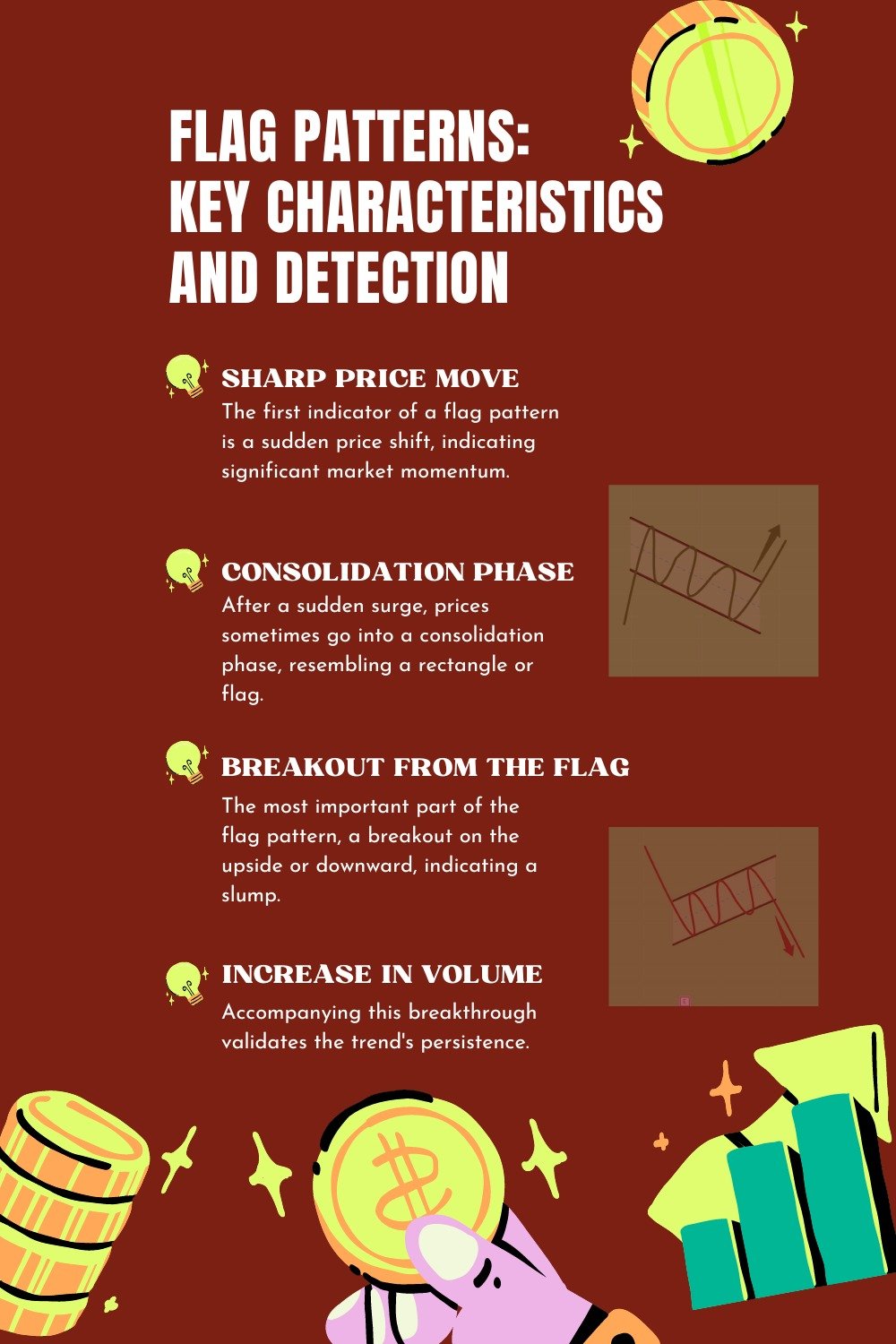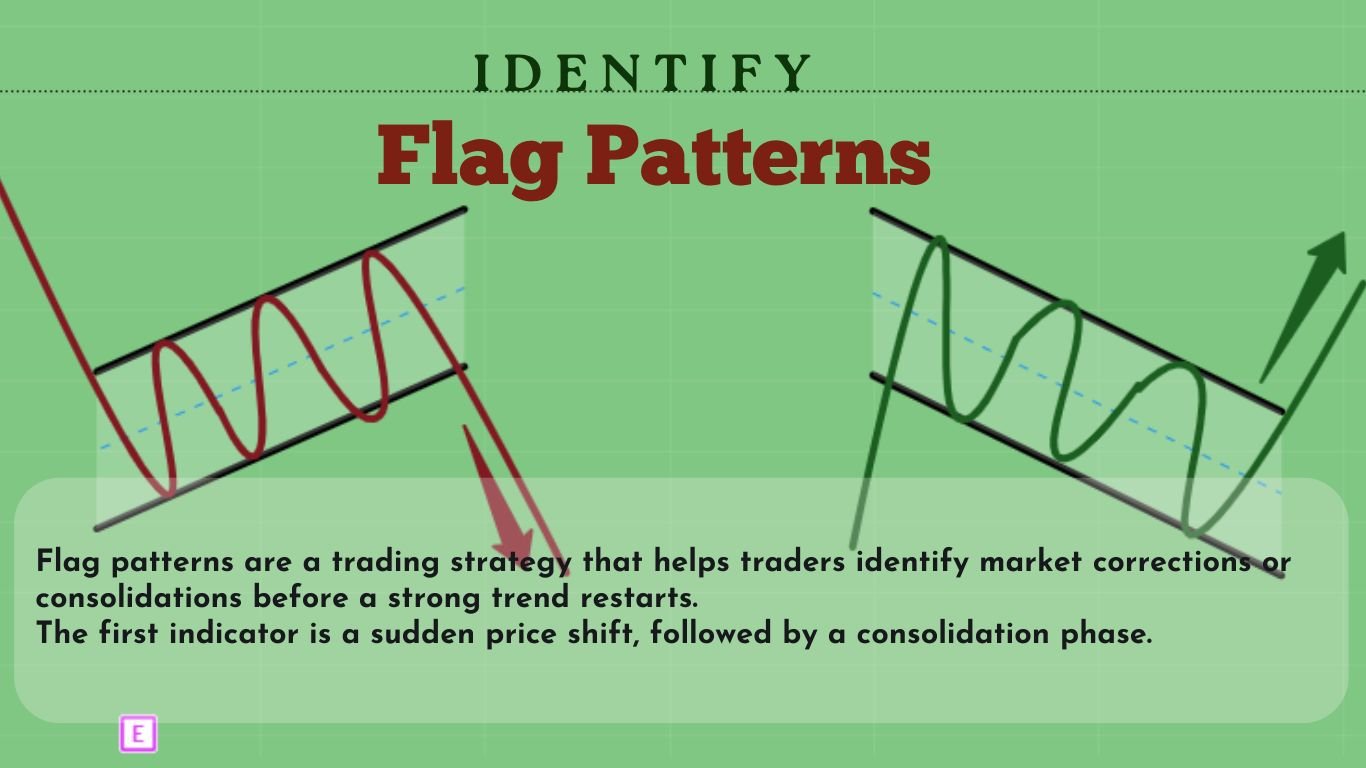Flag patterns are a useful indicator for detecting trends and making smart trading decisions. They consist of a sharp price move, a consolidation phase, and a breakout. Bullish flag patterns involve a price rise before leveling down, while bearish flag patterns form when prices are falling.
In Short
When it comes to trading, flag patterns are among the most dependable tactics you can use. Think about it: you’ve tried a variety of approaches, ideas, and indications, but nothing has worked. Then, a basic flag pattern appears on your chart. Similar to a signpost, it indicates the correct way to go.
Flag patterns are stunning because of how simple they are. Simply seeing the flag on the chart and waiting for the breakout gets you an entry. This pattern is so effective that if you could master it alone, you could generate steady profit streams.
What is Flag?
In technical analysis, if the price temporarily moves away from the current trend, a flag pattern will appear, suggesting that the reversal may be coming to an end and the trend might return quickly. Two parallel trendlines create a rectangle or parallelogram shape, giving the flag pattern its distinctive look—as if a flag were affixed to a pole.
The flag itself denotes a time of stabilization, but the flagpole represents a quick price jump. Traders closely monitor the breakout from this pattern, as it often suggests the continuation of the previous trend.
Not only does a flag have a characteristic rectangular form, but technical traders also need to look for lower highs in an uptrend or successive higher lows in a downtrend to notice it. To be considered legitimate, the pattern must include consistent price action and volume indications. If you can see this flag formation, you’ll likely find a profitable trading opportunity when it breaks out.
How Does a Flag Pattern Work?
If you’re looking for a way to re-enter the market right before a strong trend restarts, a flag pattern may help you spot the short halt or consolidation. A flag formation after an upswing usually results in a subsequent decline, forming a counter-trend movement.
This pattern is based on the psychological idea that traders are taking a break following a big price movement, but that this break will be short-lived. When the pattern finally breaks out in the same direction as the initial trend, traders will have a chance to profit from the continuation. Flag patterns are like a roadmap for catching a trend midway before it takes off again.
When looking at the market technically, you can see that the flag pattern forms a structure with higher highs and lower lows, depending on whether the trend is up or down. The market is prepared to resume its movement, as indicated by this structure.
As soon as the price moves out of the flag pattern, the trend usually picks up speed again. If you’re familiar with the flag pattern, you can use that knowledge to your advantage by waiting for these breakouts and then capitalizing on the quick price movement that generally follows.
Types of Flag Pattern
You can use both the bullish and bearish flag patterns to maintain a strong trend.
Bullish Flag Pattern
When prices rise sharply before leveling down, this formation is known as a bullish flag pattern. This consolidation takes place inside a rectangular area that slopes downward. The classic example is when a stock, such as Apple Ins, has a 23% retracement after a strong advance.

AAPL / Daily Chart
The consolidation indicates a short halt before the trend resumes its upward trajectory. When the price breaks out of the upper flag, it means the uptrend will continue strongly. This is an ideal chance for traders to join the market in the middle of a trend and profit from the subsequent upswing.
Bearish Flag Pattern
Alternatively, when prices are falling, you could get the bearish flag pattern, which is similar to the bullish pattern but reversed. A rectangular range with an upward slant has formed as the market settles after a rapid drop. Price action is reversing from the lows, forming a bearish flag as a whole.

AMZN / Daily Chart
When the price drops below the flag’s lower trendline, it signifies that the downtrend is continuing and marks a breakout. Traders seeking to short the market will find this pattern particularly intriguing since it presents a chance to capture the subsequent leg of the declining trend. Once the breakout happens, the bearish flag pattern provides a strategic entry position, much like the bullish flag.
Characteristics of Flag Patterns
When looking for signs of trend continuance, flag patterns are a favorable bet due to their distinctive characteristics. If you can identify these features, it will improve your ability to time your trades and detect patterns earlier.

Sharp Price Move
The first indicator of a flag pattern is a sudden shift in price that shapes the pattern’s pole. Whether it’s a sharp ascent in a bullish flag or a sharp fall in a bearish flag, this is the first move that establishes the pattern. Traders are quickly driving the price in one direction, which indicates significant market momentum.
Consolidation Phase
After a sudden surge, prices sometimes go into a consolidation phase. In this case, the price action looks like a rectangle or flag because it’s contained within two parallel trendlines. In a bullish flag, this consolidation has a downward slant, and in a bearish flag, it has an upward slant. Markets often experience short periods of consolidation before continuing their trends.
Breakout from the Flag
When price action breaks out of the flag formation, known as a breakout, it is considered the most important part of the flag pattern. When a breakout occurs on the upside, continuing the preceding uptrend, it is considered a bullish flag.
If the breakout is downward, indicating that the slump is ongoing, then the flag is bearish. Accompanying this breakthrough is a surge in volume, which validates the trend’s persistence.
If you’re looking to increase your chances of catching the trend at the perfect time, learning these qualities will help you confidently detect flag patterns and make smart trading choices.
Final Thoughts
Put all of your trading difficulties behind you. These patterns are beautiful in their simplicity and efficacy; seeing them is all it takes to start making money in trading. You may use these patterns as a guide to spot emerging trends, whether you’re trading bullish or bearish flags.
Never lose sight of the fact that each loss is really a stepping stone on the road to becoming an expert with this potent method. You never know when a breakthrough may lead to your next profitable trade, so remember to keep an eye out for that flag the next time you’re reviewing charts!













Leave a Reply